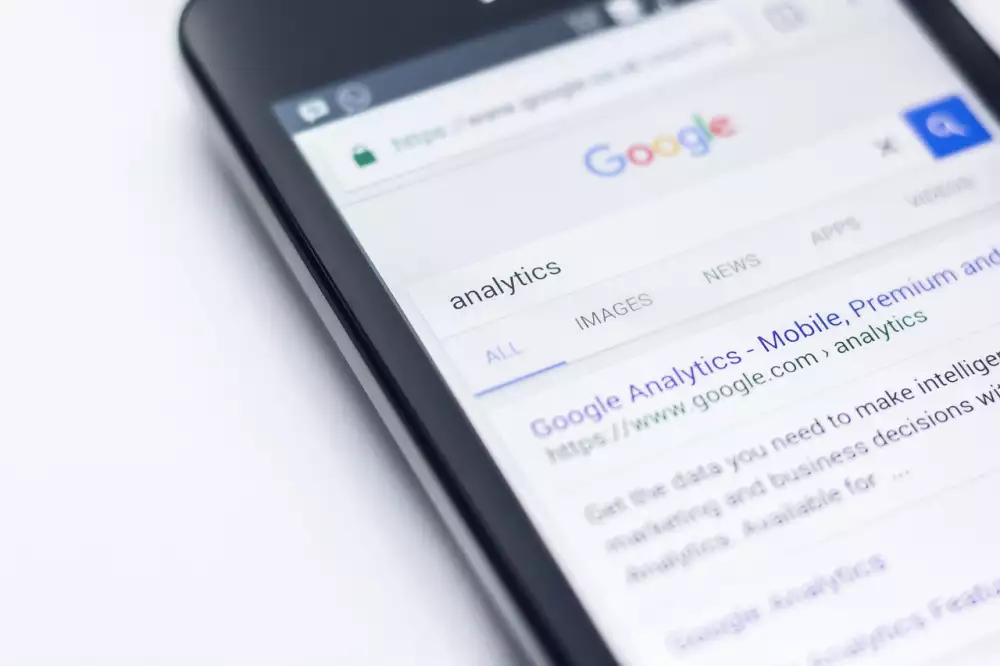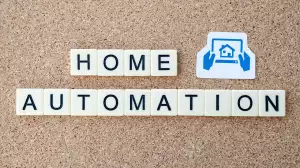Okay Google, Find Home: Your Voice-Activated Shortcut to Home Sweet Home

Voice Recognition
Voice recognition is at the heart of what makes your Google Assistant experience so seamless. When you say "Okay Google, find home," your device uses sophisticated algorithms to interpret your words and understand your intent. It's not just about recognizing the words "find" and "home" but also comprehending the context of your request. Your device knows you're asking for directions and that "home" refers to your pre-set home address in Google Maps.
This technology relies on a vast database of voice samples and machine learning to constantly improve its accuracy. The more you use voice commands, the better your device becomes at understanding your unique voice and accent. This personalized approach ensures that your requests are interpreted correctly, even in noisy environments or when you speak casually.
Beyond just finding your way home, voice recognition empowers you to interact with your device in a more natural and intuitive way. Whether you're setting alarms, making calls, or controlling smart home devices, the ability to communicate with your device using your voice simplifies everyday tasks and enhances your overall user experience.
Natural Language
Natural language processing is the technology that allows us to communicate with our devices using everyday language. With natural language, we no longer need to memorize complex commands or navigate through menus. Instead, we can simply speak or type our requests in a way that feels natural and intuitive.
This technology is particularly useful for voice assistants like Google Assistant. For example, if you need directions home, you can simply say "Okay Google, find home." Google Assistant will understand your request and provide you with the fastest route home, taking into account current traffic conditions. You don't need to specify your address or even open a map application. Google Assistant already has access to your location information and can retrieve the necessary data to fulfill your request.
This seamless integration of natural language processing into our devices has made our lives easier and more efficient. We can now control our devices, access information, and perform tasks using the most natural form of communication: our own language.
Google Assistant
Google Assistant is a powerful voice assistant that can help you with many tasks, including finding your way home. If you have the Google Home app set up and your home address saved to your Google account, you can simply say "Okay Google, find home" or "Hey Google, navigate home." Google Assistant will then use your phone's GPS or your Google Home device's location to determine your current location and provide you with directions to your home address.
You can also ask Google Assistant for directions to your home using more specific voice commands, such as:
"Okay Google, give me directions to home."
"Hey Google, how do I get home?"
"Okay Google, navigate to my home address."
Google Assistant will then provide you with turn-by-turn directions, either through your phone's speaker or through your Google Home device. You can also view the directions on a map on your phone or tablet.
If you have multiple addresses saved to your Google account, you can specify which address you want directions to by saying something like "Okay Google, navigate to my work address" or "Hey Google, give me directions to Mom's house."
Google Assistant can also help you with other tasks related to your home, such as:
Controlling your smart home devices
Playing music
Setting alarms and timers
Making calls
Sending text messages
Overall, Google Assistant is a versatile and helpful tool that can make your life easier, especially when it comes to finding your way home.
Location Services
For "Okay Google, find my way home" to work its magic, Location Services needs to be switched on. Think of it as Google's way of pinpointing your location on a map. With Location Services enabled, Google Assistant can accurately determine where you are and provide the fastest route to your home sweet home.
But before you hit the road, ensure you've set your home address in Google Maps. It's super easy! Just open the app, tap on your profile picture, and go to "Your Places." There you can set or edit your home address. With that sorted, Google Assistant will always know where to send you when you utter those magic words: "Okay Google, find my way home."
Remember, Location Services is key to unlocking the full potential of voice commands like this. It's the secret sauce that allows Google Assistant to provide personalized and location-aware responses. So, embrace the power of Location Services and let Google be your guide!
GPS Technology
The magic of "Hey Google, find my way home" relies heavily on GPS technology. GPS, or Global Positioning System, is like a network of satellites orbiting Earth, constantly sending out signals. Your smartphone, with its built-in GPS receiver, picks up these signals. By calculating the time it takes for the signals to travel from multiple satellites to your phone, it can pinpoint your exact location on Earth.
Think of it like triangulation, but on a much grander scale! When you ask Google to navigate home, your phone uses its GPS location to figure out where you are. Google then accesses your pre-saved home address and calculates the best route, taking into account real-time traffic conditions. This information is then relayed back to you, the user, through clear voice instructions and a visual map on your phone, guiding you turn-by-turn until you reach your doorstep.
Mapping Software
Mapping software plays a crucial role in enabling the "Okay Google, find home" functionality. When you utter this voice command, Google Assistant leverages the power of mapping software to pinpoint your location and determine the most efficient route to your designated home address.
Here's how it works:
Mapping software utilizes GPS data from your device to ascertain your current whereabouts.
It accesses a vast database of maps, containing detailed information about roads, streets, landmarks, and traffic conditions.
By analyzing this data, the software calculates the optimal route from your current location to your home address, taking into account factors such as distance, estimated travel time, and real-time traffic updates.
The calculated directions are then presented to you in a user-friendly format, typically through a visual map display on your smartphone or other devices.
To ensure accurate directions, it's essential to have the correct home address saved in your Google account settings. You can easily update or modify this information as needed.
With the seamless integration of mapping software and voice recognition technology, finding your way home has never been easier. Simply say "Okay Google, find home," and let your virtual assistant guide you.
Data Connection
The "Ok Google, find home" command relies on a constant data connection to function correctly. Your smartphone or smart speaker needs access to the internet to communicate with Google's servers and retrieve the necessary location data. This connection can be established through your mobile data plan (like 4G or 5G) or a Wi-Fi network.
When you use the voice command, your device sends a request to Google's servers, including information about your current location obtained from GPS, nearby Wi-Fi networks, or cell towers. Google then processes this information, compares it to the saved home address in your Google account, and calculates the optimal route. The calculated directions, often with real-time traffic updates, are then sent back to your device and displayed on your screen or announced through your speaker.
A stable data connection is crucial for this entire process to happen seamlessly. If your connection is weak or interrupted, the command might not work, or the provided directions might be inaccurate or outdated.
Personalized Results
One of the most convenient aspects of using "Okay Google" with Google Home is its ability to provide personalized results, especially for tasks like finding your way back home. Once you've set up your home address in the Google Home app, a simple voice command like "Okay Google, navigate home" or "Okay Google, directions to my house" is all it takes. Google Assistant leverages this information to instantly calculate the optimal route from your current location, taking into account real-time traffic conditions. This personalized approach eliminates the need to manually enter your address every time you need directions home, saving you time and effort. Whether you're driving, walking, or using public transportation, Google Assistant will guide you with turn-by-turn directions, ensuring you reach your doorstep without any hassle. This feature exemplifies the power of personalized results, making your interactions with Google Home both efficient and intuitive.
User Privacy
Using "Okay Google, find home" is undoubtedly convenient, but it raises important privacy considerations. When you use this voice command, Google receives and processes your voice data to understand your request and provide directions. This data, linked to your Google account, contributes to building a profile of your habits, including where you live.
Google's privacy policy outlines how this data is used, including personalizing your experience and potentially for targeted advertising. While Google emphasizes data security measures, the possibility of data breaches or misuse remains a concern for privacy-conscious users.
You can manage your Google voice and activity settings to control how your data is used. Options include deleting your voice history, limiting data collection, or using incognito mode for more private interactions. Additionally, consider the privacy implications of other smart devices in your home that might be listening and recording.
Ultimately, finding a balance between convenience and privacy is a personal choice. Understanding how your data is used empowers you to make informed decisions about your digital footprint.
Smart Home Integration
Smart home integration has made life incredibly convenient. With a simple "Okay Google, find home," Google Assistant can pinpoint your home's location. This is especially helpful if you've just moved or are in an unfamiliar area. But the real magic happens when you combine this with other voice commands. Imagine this: you're driving back from a weekend getaway, and you're unsure about the traffic situation. You can simply say, "Okay Google, give me directions home," and Google Assistant will not only provide the best route but also factor in real-time traffic conditions. This seamless integration of voice commands, location services, and real-time data is what makes smart home technology so powerful.
Voice Search Trends
The popularity of voice search, particularly using commands like "Okay Google," has skyrocketed, changing how we interact with technology. This shift is largely fueled by the increasing presence of smart speakers and voice assistants in our homes and on our devices. A simple "Okay Google, find home" or "Hey Google, navigate home" provides instant directions, showcasing the convenience voice search offers. This hands-free, eyes-free approach is especially appealing when multitasking or on the go.
This trend goes beyond just asking for directions. People use voice search to control smart home devices, set reminders, make calls, and even shop online. As technology advances, we can expect even more sophisticated voice commands and capabilities. Developers are constantly working on improving natural language processing, enabling voice assistants to understand and respond to our requests more conversationally and accurately.
The rise of voice search presents exciting opportunities for businesses and marketers. Optimizing websites and content for voice search is becoming crucial to reach target audiences effectively. This includes using natural language, long-tail keywords, and providing concise, direct answers to potential voice queries. As voice search continues its upward trajectory, understanding and adapting to its nuances will be key to staying ahead of the curve.
Future of Navigation
The evolution of navigation is astonishing. Remember paper maps and struggling to fold them correctly? Now, we have real-time traffic updates and voice-activated directions. Speaking of which, "Okay Google, find home" is a game-changer. This simple command, understood by your Google Assistant, highlights the future of navigation - a seamless blend of voice technology and location awareness. Imagine this: you are leaving the grocery store, hands full of bags. Instead of fumbling for your phone, you simply utter those magic words. Google Assistant, already knowing your home address, instantly pulls up the best route, considering traffic conditions and even suggesting alternative routes if needed. This is just the tip of the iceberg. As voice recognition and AI improve, expect even more personalized and intuitive navigation experiences. We are talking about proactive alerts about road closures on your usual route or even suggestions for a pit stop at your favorite coffee shop along the way. The future of navigation is not just about getting from point A to B; it is about a smoother, smarter, and more integrated journey overall.
Publikováno: 20. 06. 2024
Kategorie: Technology



